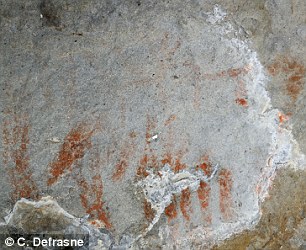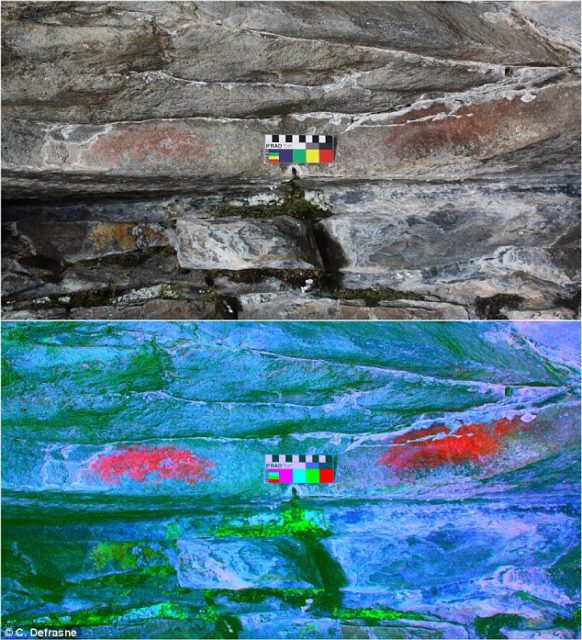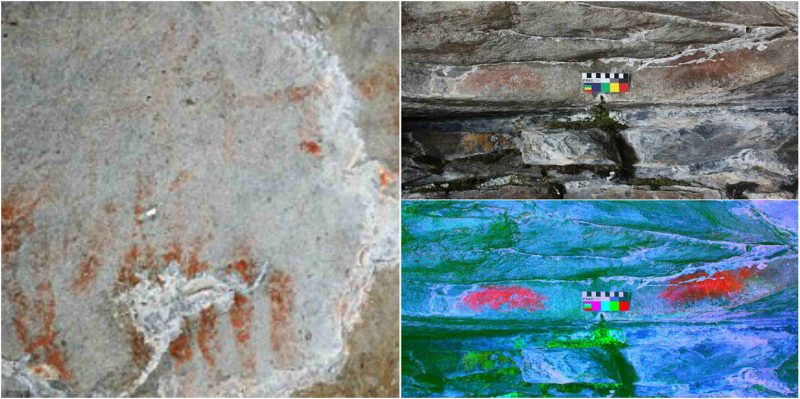It was completely by chance that the ancient cave paintings were found in 2010. Located at a rock shelter known as Abri Faravel in the French Alps, these daubs of paint are believed by experts to be thousands of years old. One of the paintings, depicting a deer with a spear on its back—a common motif in cave paintings—might be as old as 5,000 years.
The paintings are barely visible on the rough stone, but now British and French archeologists have used laser analysis to scan the paintings. This has provided new insights to the prehistoric “graffiti.”
Archeologists believe that the site, in the Parc National des Ecrins, is the highest cave paintings to be found to date—they are located 2,133 meters (6,890 feet) above sea level. There are other regions in the Alps that have examples of engraved rock art, but those do not compare to those at Abri Faravel.

The team of archeologists that are studying the paintings hails from the University of York. They believe that the remote mountain area in which the paintings are located might have served as an important pasturing ground, summer grounds, from the Mesolithic to Medieval period (8,000 to around 1,500 years ago). It is still used by shepherds today, although only during the summer months when the snow has melted away.
The team was armed with scanners and car batteries when they left for the hike to the site. Once there, they used laser and white light to map the topography of the rock shelter and the surrounding areas.
These scans not only allow new details in the paintings to be observed, but the scans were also used to make a virtual model that is designed to give viewers an idea of what it’s like to walk around a high altitude landscape. The rock shelter and their artwork are, naturally, central to the model.
The lead researcher on the project is Doctor Kevin Walsh. In an interview with MailOnline, he said, “It’s about putting this rock shelter into its landscape context. That’s incredibly important when it comes to studying any kind of archaeological site—thinking about the surround landscape, what people could see, what kind of environment they were dealing with.”

This digital models are part of a larger project that the team has been working on since 1998—they are focusing on human activities at high altitudes (2,000 meters or higher) in the Alps over the last 2,000 years. Their research has been published online.
“It’s part of a bigger project about human use of high altitude landscapes,” explained Dr. Walsh.
It is the hope of the researchers that the project will shed more light on human activity in high altitude areas, which could be thought of today as a preserve of experienced walkers and climbers.
“What it does show is that whereas today people may see these high altitude-areas as being extreme environments that only mountaineers and hikers, who are used to that kind of thing, would go to,” explained Dr Walsh. “In the past, maybe 4,000 or 5,000 years ago, people were living and working in these landscapes and that’s the kind of thing that our project has demonstrated, that the origins of activity of high altitude go back a very long time.” He added.
The human activity wasn’t necessarily entirely consistent throughout the centuries. Instead, archeologists believe that the area went through phases of human activity. Working on the site, researchers have found a number of artifacts, including flint, pottery, metalwork, and even a Roman brooch—interestingly the jewel of the site is the cave paintings and not the things found.
